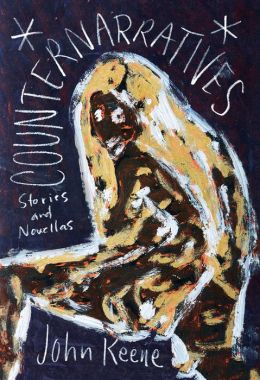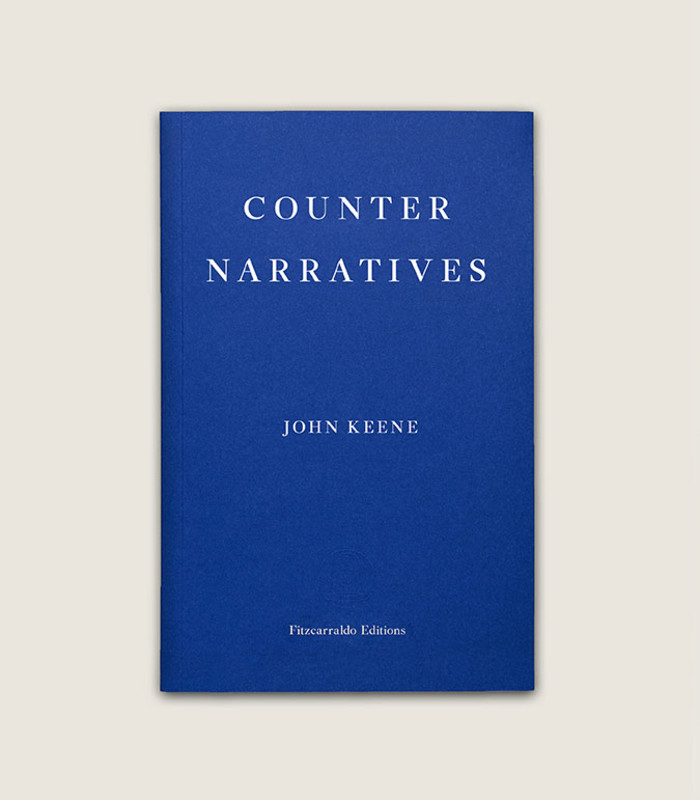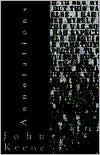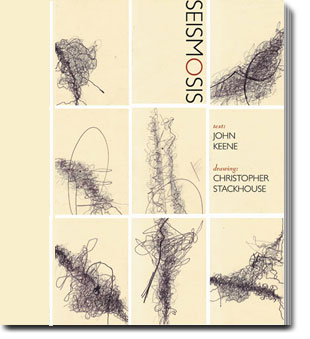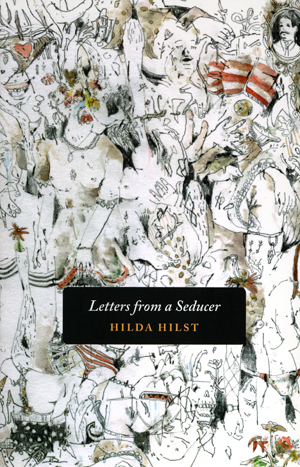I end this month's run of ekphrastic poems with yet another approach to the genre, by John Yau (1950-), a poet whose work has garnered an array of awards over the years but who, I believe, remains still too little known or discussed. A native of Lynn, Massachusetts and a longtime professor of art history and criticism at Rutgers University-New Brunswick, Yau began publishing his work in the early 1970s, and from the beginning, he showed a singular voice with his inventive, playful, humorous poems, drawn from his experience as an Asian American child and young adult growing up in mid-century America, viewing the work of Asian American and white artists, taking in the mass culture of those years, and engaging in dialogue with his avant-garde contemporaries as well as senior figures whom he studied with at Boston University, Bard College and Brooklyn College, including John Ashbery and Robert Kelly. Yau also has published fiction; established and runs a press, Black Square Editions; and serves as a freelance curator, and regularly writes for an online magazine he co-founded, Hyperallergic Weekend. He was the Art Critic for the Brooklyn Rail from 2006-11.
Yau's poetry can range from riffs on popular culture to readings of rarefied art, but his personal, incisive vision and sensibility always come through. By far the best and most subtle reading of Yau's poetry (and of Mei-Mei Berssenbrugge's work, Asian American poetry and contemporary experimental poetics, particularly in relation to the politics of race and form in general) can be found in Dorothy Wang's award-winning scholarly monograph Thinking Its Presence: Form, Race, and Subjectivity in Asian American Poetry (Stanford, 2014). As Dorothy notes in the opening of her first chapter on Yau, in his work one can find "Film noir, Jasper Johns, Peter Lorre, Anna May Wong, Eugene Delacroix, Boris Karloff, Dashiell Hammett, X-rated movies, German Expressionist writers...." (Wang, Thinking Its Presence, p. 162). Yau has developed a unique means for bringing all of these strands together, even though, as he has said, he aims not to have a particular "style," but to leave open all avenues of experimentation.
Like Ashbery, Yau has written extensive art criticism, and published a hybrid book of poetic criticism, entitled Further Adventures in Monochrome in 2012. The title immediate tips off an astute reader to the book's subject and focus: the experimental genius and proto-conceptualist Yves Klein (1928-1962), whose untimely death cut short a path-charting career across a range of formal experiments. Klein was a painter, composer, sculptor, installation and performance artist, judoka (!), and exemplar of the Nouveau réalisme movement, while also prefiguring Pop and minimal art. And, as I wrote of Frank O'Hara but a few days ago, he accomplished all of this in a very tiny window of time. Perhaps best known for his International Klein Blue 191, the sublime, seemingly infinite blue monochrome that he made the subject of various works--and which is the color of the British edition of Counternarratives, published by Fitzcarraldo Editions!--he also created a number of other works that both critiqued the post-war moment of their appearance and looked forward to whole swaths of art to come.
In Further Adventures in Monochrome, Yau attempts to do more than write about Klein and his art. In 2013, Rachel May interviewed Yau for the Los Angeles Review of Books, and introduces the collection in this way:
The title poem of Further Adventures, written in 15 sections that alternate between poetry and prose, addresses issues central to Yau’s work: his insistence that “painting is not dead,” the materiality of paint and language, language’s plasticity. He takes on the voice of Yves Klein throughout the poem’s 15 sections, and also speaks to Klein’s own writing about painting in 1954, and engages with Baudelaire, Mallarme, Dickinson, Rilke, Trakl, Whitman, Pollock, Warhol, and Johns, among others. The work is sometimes playful, as in the section titled “(Robert Desnos and Yves Klein meet in the sky),” but he’s pushed past what might be categorized as ekphrastic poetry or criticism, to create a form that combines the two. He speaks from or with the art, rather than “about” it. The penultimate section opens in the voice of Klein:
What I wanted from art was impossible. This is what every artist wants. If you settle for the possible, then your failure is ordinary, although, in a few cases, spectacular. I didn’t want what was there for the taking, the images of things that could be named. I didn’t want to add names to the vocabulary.
That’s part of it. In a way, what I learned from painters is that words could be treated as things, that you could put any one color next to any other color. And I thought, in poetry, you should technically be able to put any one word next to any other word. So, looking at painting made me look at language differently.
I’m interested in what language is capable of, and I am interested in collage without collaging. In other words, I do try to put one thing next to another — words, phrases — but I haven’t actually collaged. I haven’t taken it from one place and collaged it next to something from another place.
FROM “FURTHER ADVENTURES IN MONOCHROME”
by John Yau
4)
I dwell in possibility, Emily Dickinson
I dwell in impossibility, Yves Klein
You should understand that I did not want you to read a painting. I wanted you to bathe in it before words domesticated the experience, and you turned to such stand-bys as “illumination” and “transcendent” to describe what happened to you. Painting should not be sentenced to sentences.
Painting is COLOR, I yelled at my first champion and biggest supporter. COLOR banishes words from its domain. When you read a painting, you turn it into language, but there is so much that cannot be turned into language that each of us experiences every day.
Red shadows leak out of rusting cars and collapsed bridges. Green smoke rises from behind horizons and rooftops. The spectrum of your mother’s voice the last time she spoke to you.
Every day there are thresholds that you must cross to reach the domain where words mar every transmission, rendering them intangible. We put our memory of these reverberations aside in favor of what is known and, we believe, knowable. We say we are going to the beach and we will look at the ocean and leave indentations in the sand, but that is not what happens. We go there to ponder a blue parcel cut from infinity.
True poets and artists know where language ends, which is why they go there. Some settle for going beyond the possible into possibility, but others want to dwell in the impossible. I am not talking fantasy here, because that version of the impossible is just a story about a girl named Thumbelina or a boy named Jack. The ones who go to where two roads diverge in a yellow wood are not poets, because they believe that experience can be reduced to a lesson about choices. True poets know that language is neither window nor mirror. The mistake is to believe that the opposite is true, that words (or signs) are arbitrary.
This is my example of why words are not arbitrary. Charles Baudelaire believed that there are perfumes for which all matter is porous. These perfumes can permeate the air of one’s dreams. Our thoughts quiver in the shadows that fall over us; they begin to free their wings and rise in flight, tinged with azure, glazed with rose, spangled with gold.
Azure, Rose, Gold.
I was not thinking of Baudelaire when I made my paintings, but the poet was clearly dreaming of me when he sat at his desk and wrote “The Perfume Flask.”
Can’t you see that this is how I, radiating outward, happened to appear on this planet, this speck of dust? Yves Klein was born because Baudelaire predicted this propitious event by naming colors, which, like all colors, escape the confines of their names, becoming more than an emanation of infinity. Even black can get away from its name, which is why Malevich had to surround it with white. But what is color that isn’t surrounded by another color? What is that boundless world we catch a glimpse of whenever we look up at the sky? Is it so vast that we must turn away from it, afraid that it will swallow us up, which it will? Astronomy, the Greeks believed, was a royal science, which means I am a royal painter. Do not confuse me, however, with a painter of royalty, with Ingres, who used lines to hold and improve the faces of his sitters, who believed in the despotic power of beauty.
I am not interested in beauty. I am not Andy Warhol. He longed for possibility, but was afraid of what it might tell him. I dwell in impossibility, and I want to be embraced by what it will tell me. My name is Yves Klein. There is a photograph of me that you might know. I have put on my best suit and jumped out a window. My arms are outspread, but they are not wings. I don’t need them to fly. Nor am I the prince of clouds, Baudelaire’s albatross, fallen from the sky. Screw that fascist Marinetti. My arms are not the wings of a drunkard beating against the wall. Mine are the outstretched arms of a diver. I fall effortlessly through the air, but I never am completely fallen. The cobblestones and I will never meet. I hover in a miracle, which is why you believe in the photograph, even after you have learned how I tricked you. It wasn’t that hard to do. The true magician shows everyone how the trick was done, and after seeing how you were deceived, you believe in the trick all the more. I jumped out the window and I stayed in the air, which is where you wanted me to stay. I dwell in impossibility—that zone that lies beyond here and there, while embracing both.
Copyright © John Yau, from Further Adventures in Monochrome, Port Washington: Copper Canyon Press, 2012. All rights reserved.
And here are two of Klein's works, also borrowed from Michael's curated selection:
 |
| Yves Klein. Silence is Golden (1960). ADAGP, Paris. |
 |
| Yves Klein, photographed by Harry Shunk and Janos Kender. Leap into the Void (1960). Gelatin silver print. 25.9 x 20 cm. The Metropolitan Museum of Art. |






